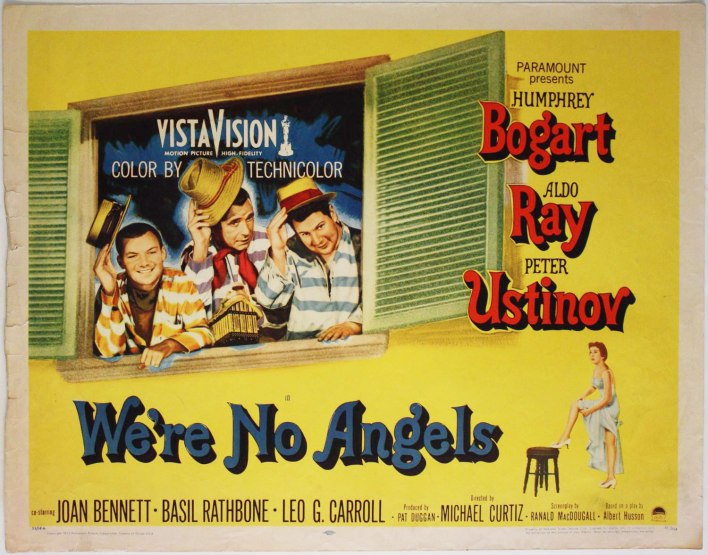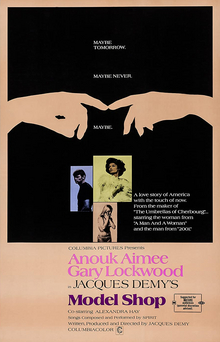Search This Blog
Sunday, September 30, 2012
Looper (2012)
In the year 2044, a "looper" (Joseph Gordon Levitt) works for the mob by assassinating people sent from 30 years into the future by the mob expressly for the purpose of execution. While time travel is illegal, it's secretly done by the mob to dispose of bodies. But when the Gordon-Levitt gets sent his future self (Bruce Willis) to execute, he escapes and the chase is on. The movie is great fun, fairly intelligent and has wonderful special effects. It owes a massive debt to James Cameron's THE TERMINATOR though, even the film's heroine (Emily Blunt) is named Sara, the same name of the heroine in THE TERMINATOR. Would that it were as tight and economical as the Cameron film though. The convoluted narrative is often confusing and the director Rian Johnson always seems to have something going on so the audience doesn't have enough time to dwell on awkward questions. Still, I had much more fun at it than I had at THE DARK KNIGHT RISES. With Jeff Daniels, Piper Perabo. Paul Dano and Pierce Gagnon as possibly the most creepy child character since Damien in THE OMEN.
Duchess Of Idaho (1950)
Male And Female (1919)
A butler (Thomas Meighan) in the home of a British aristocratic family is in love with the spoiled and haughty eldest daughter (Gloria Swanson). But when the family's yacht gets shipwrecked during a South Seas cruise, the effete aristocrats find themselves helpless and it's up the butler to take over and save the day. Based on the J.M. Barrie play THE ADMIRABLE CRICHTON, director Cecil B. DeMille doesn't seem so much interested in Barrie's examination of a social class system as he is in sexual titillation and spectacle. Swanson is seen luxuriating in rose water baths and late in the movie there's a sequence where Meighan and Swanson fantasize being in ancient Babylon with Meighan a King and Swanson a slave girl. Today, the film plays out like a rather more elegant episode of GILLIGAN'S ISLAND but both Meighan and Swanson have likable, strong screen presences and the film is modestly entertaining. With Lila Lee, Robert Cain, Julia Faye, Bebe Daniels, Raymond Hatton and as the head of the family, Theodore Roberts whose shameful mugging sticks out among the naturalistic performances.
The Strawberry Statement (1970)
Saturday, September 29, 2012
Bel Ami (2012)
Set in 1890 Paris, an ex-soldier (Robert Pattinson) newly returned from serving in Algeria is eking out a meager existence as a clerk. A chance encounter with an old army comrade (Philip Glenister) introduces him to French society and slowly the cad rises to the top by using and manipulating the wives of powerful and wealthy men. Based on the novel by Guy De Maupassant (and previously filmed in 1947 with George Sanders in the Pattinson role), the film boasts excellent art direction and costumes to perfectly recreate 1890 Paris society. The direction, shared by Declan Donellan and Nick Ormerod, is adequate and the screenplay is compelling enough to hold our attention. But where it fails, and it's fatal, is the casting of the charmless Pattinson whose brooding puppy persona is all wrong for the role. Furthermore, Pattinson the actor, like his character, simply isn't good enough for the three women who play the crucial women in his life. Uma Thurman, Kristin Scott Thomas and Christina Ricci all bring texture to their performances while Pattinson flails about though, to his credit, you can see him trying to no avail. It doesn't bode well for his career. With Colm Meaney and Anthony Higgins.
Kwaidan (1964)
A portmanteau film consisting of four Japanese ghost stories: The Black Hair in which a samurai (Rentaro Mikuni) abandons his wife (Michiyo Aratama) and a life of poverty to marry the daughter (Misako Watanabe) of a wealthy man (Kenjiro Ishiyama), Woman Of The Snow in which the life of a young man (Tatsuya Nakadai) whose life is spared by a female vampire (Keiko Kishi) on the condition of a promise, Hoichi The Earless in which a blind musician (Katsuo Nakamura) is seduced by ghosts into entertaining them and In A Cup Of Tea in which a warrior (Kanemon Nakamura) sees the reflection of an unknown man in his tea. Winner of the Special Jury Prize at Cannes as well as an Oscar nomination for a Best Foreign Language film, this is one stunning looking film! Masaki Kobayashi's film is a very stylized film entirely filmed on soundstages including sea battles and snow storms which allows him to control the lighting and color. The first two stories are quite captivating (the second one was ripped off in 1990's TALES FROM THE DARKSIDE: THE MOVIE) but the film's snail pacing, the film pushes the three hour mark, eventually makes the last two hard going despite the impressive visuals. With Tetsuro Tamba (YOU ONLY LIVE TWICE) and Haruko Sugimura (TOKYO STORY).
Thursday, September 27, 2012
Les Girls (1957)
Wednesday, September 26, 2012
Foreign Intrigue (1956)
When a millionaire (Jean Galland) with a mysterious past dies suddenly, several people suddenly appear asking questions and wanting information. His press agent (Robert Mitchum) and his beautiful widow (Genevieve Page, BELLE DE JOUR) realize they know nothing about him. But as they pry into the dead man's past, what they find could make them very rich ... or kill them. Shot in Eastman color on location on the French Riviera, Vienna and Stockholm; the film lives up to its title for the first half. But once we get the big reveal, it becomes a less interesting standard spy thriller dependent on Mitchum's star power to get us through the rest of the movie. It's never boring, I'll give it that and it's a treat to see a pre-Bergman Ingrid Thulin looking so sexy and charming and gorgeous in her Pierre Balmain wardrobe (as does Ms. Page). The monotonous score is by Paul Durand. Directed by Sheldon Reynolds, who directed a television series with the same name some five years earlier. With Frederic O'Brady, Inga Tidblad and John Padovano.
The Man Who Knew Too Much (1934)
Tuesday, September 25, 2012
Julius Caesar (1953)
In Rome 44 B.C., fearing the powers given to Julius Caesar (Louis Calhern) will make him Rome's dictator, a group of conspirators lead by Brutus (James Mason) plot to assassinate him. Joseph L. Mankiewicz is perhaps the most literate of film directors having directed such dialogue driven classics as ALL ABOUT EVE, A LETTER TO THREE WIVES, SUDDENLY LAST SUMMER and SLEUTH. Therefore it should come as no surprise then that his adaptation of Shakespeare's play is presented in a straight forward manner with very few concessions to cinema, a notable exception being the attack on Cassius' (John Gielgud) troops. As such, it's a decent film though lacking the imagination Olivier, Welles and Branagh brought to their filmed Shakespeare projects. Fortunately, the acting is fine and usually more than that. A controversial choice at the time, Marlon Brando makes for a sly, nuanced Marc Antony while James Mason brings a dignified weightiness to his Brutus. There's a superb score by Miklos Rozsa to boot. The large cast includes Deborah Kerr, Greer Garson, Edmond O'Brien, Edmund Purdom, George Macready, Michael Pate, Alan Napier, John Hoyt, Michael Ansara, Douglass Dumbrille, Rhys Williams and John Doucette.
Cry Of The City (1948)
Monday, September 24, 2012
Silver City (1951)
Sunday, September 23, 2012
It Started In Naples (1960)
Juno And The Paycock (1930)
Saturday, September 22, 2012
High Season (1988)
A group of disparate characters come together on the Greek island of Rhodes during the height of the tourist season: a photographer (Jacqueline Bisset) and her husband (James Fox) though separated have lived on the island for many years, a young Greek (Paris Tselios) turns the family cheese shop into a souvenir shop for tourists against the wishes of his widowed mother (Irene Papas), a British civil servant (Kenneth Branagh) ostensibly on vacation with his sow of a wife (Lesley Manville) has an ulterior motive for being on the island, an art historian (Sebastian Shaw), a wealthy Greek-American millionaire (Robert Stephens) and Bisset's daughter (Ruby Baker) complete the list. The first feature film by the writer Clare Peploe (who happens to be married to the director Bernardo Bertolucci) is an elated fresh comedy with several twists and turns that manages to be both witty and poignant simultaneously. The harmonious cinematography by Chris Mendes (an Oscar winner for THE MISSION) is a work of art whether it's the glowing Greek seascapes or Bissett radiating in the moonlight. The acting is first rate with a strong performance by Shaw and what a treat to see the great tragedienne Papas doing comedy. A real jewel which is criminally under seen.
Shockproof (1949)
After serving a murder sentence, a young woman (Patricia Knight) is paroled. Under the terms of her parole, she's forbidden to see the lover (John Baragrey) she killed for. But when her parole officer (Cornel Wilde) begins to fall in love with her, she finds herself torn between the two men. The unlikely duo of Samuel Fuller, who co-wrote the screenplay, and director Douglas Sirk produced this noir tale of two people who find themselves trapped in circumstances beyond their control which threatens any happiness they might have had. Sirk skillfully maneuvers the net that pulls us as well as its protagonists until we reach the inevitable dead end. Alas, the film should have ended a few minutes before it does, thus sparing us the phony "happy" ending (apparently a studio decision) which demeans everything that went on before it and alters Fuller's original darker ending. The lovely Knight, married to Wilde at the time, seems primed for bigger things but after two more films, her career was over. The underscore is by George Duning (FROM HERE TO ETERNITY). With Esther Minciotti (MARTY), Ann Shoemaker and King Donovan.
Friday, September 21, 2012
The Guns Of Navarone (1961)
In 1943, a small troop of specially trained military commandos are assigned the task of blowing up a German fortress on the island of Navarone, specifically the huge radar directed guns that will be used against the invading British naval forces. One of the best WWII action films ever made, this rousing adventure is one of those rare films where everything falls into place: the literate Oscar nominated script by Carl Foreman, the taut direction by J. Lee Thompson, the gorgeous Greek landscape lovingly shot by Oswald Morris (FIDDLER ON THE ROOF), the stirring score by Dimitri Tiomkin and fine performances right down the line. While the film can be viewed as an exciting WWII actioner, it's more complex and layered than other popular films in the genre like THE GREAT ESCAPE. Without proselytizing, the film examines the inconsistencies and contradictions of war. How man enacts great feats of bravery and courage amid the cruelty and damage of war. Based on the novel by Alistair MacLean. The impeccable cast includes Gregory Peck, David Niven, Anthony Quinn, Stanley Baker, Irene Papas, Anthony Quayle, Gia Scala, James Darren, Richard Harris, James Robertson Justice, Walter Gotell and Allan Cuthbertson. A sequel of sorts, FORCE 10 FROM NAVARONE was made 17 years later.
The Last Performance (1929)
Thursday, September 20, 2012
The Five Pennies (1959)
In the 1920s, a young cornet player (Danny Kaye) from Utah comes to New York with ambitions of eventually starting his own jazz band. He marries a band singer (Barbara Bel Geddes, VERTIGO) and his career flourishes but when his daughter (Susan Gordon as a child, Tuesday Weld as a teen) contracts polio, he reluctantly puts his career aside. Though based on the career of band leader Red Nichols (who dubs Kaye's cornet playing), the film is schizophrenic. Much of the film is merely another Danny Kaye comedy with Kaye doing his schtick but towards the second half, Kaye does some serious dramatic acting and he's not bad either. Bandleader/musician movie bios were hugely popular in the fifties: THE GLENN MILLER STORY, THE BENNY GOODMAN STORY, THE GENE KRUPA STORY, YOUNG MAN WITH A HORN etc., and as far these types of movies go, FIVE PENNIES is better than most but still suffers from the usual cliches of the genre. The film received four Oscar nominations (Daniel Fapp's cinematography, Edith Head's costumes, Leith Stevens' score and the song THE FIVE PENNIES). Directed by Melville Shavelson. With Harry Guardino, Louis Armstrong, Bob Crosby, Bobby Troup, Ray Anthony, Valerie Allen and as himself, Bob Hope.
The Devils (1971)
In 17th century France during the purging of Huguenots, Cardinal Richelieu (Christopher Logue) urges his henchman (Dudley Sutton) to encourage the accusations of a demented hunchback nun (Vanessa Redgrave) in the city of Loudun that the town's priest (Oliver Reed) is in league with Satan. One of the, if not the, most controversial films of the 1970s, I'm not sure what to make of Ken Russell's THE DEVILS. A political tract on unchecked power and how religion is perverted and used in order to accomplish political aims or an over the top freak show? Or maybe a little of both. It's not a naturalistic film but a dreamy, surreal excursion and Russell pushes the envelope with as much religious sexual imagery as he can away with. Still, it isn't easy watching Vanessa Redgrave being sexually brutalized or Oliver Reed getting graphically tortured while hysterical nymphomaniac naked nuns attack any male in sight. But you have to hand it over to Russell, the excesses are intentionally humorous though your laughter might get stuck in your throat. The stunning art direction is by Derek Jarman and the dissonant underscore by Peter Maxwell Davies. With Georgina Hale, Gemma Jones, Murray Melvin, Max Adrian and Catherine Willmer.
Wednesday, September 19, 2012
Elvira Madigan (1967)
In 1889 Sweden, a 35 year old married soldier (Thommy Berggren) with two children runs off to Denmark with his 21 year old tightrope walking mistress (Pia Degermark). Based on a true story, the film follows the last month of their lives. Directed by Bo Widerberg, the film was a huge arthouse hit in its day. Educated audiences who would have sneered at Ali MacGraw and Ryan O'Neal running around meadows chasing butterflies, somehow swooned when it was done by Degermark and Berggren. Maybe it was the tony Mozart music on the soundtrack to clue the audience that they were watching something "artistic". Modern audiences may not be so gullible. Oh, make no mistake about it. This is a ravishing film with its idyllic forests and picturesque country inns lovingly photographed by Jorgen Persson (MY LIFE AS A DOG), starving and suicide has never been so glamorous. Bergrren is very good and Degermark looks exquisite though her winning the best actress award at the Cannes film festival is a bit of a puzzler.
Tuesday, September 18, 2012
Roughly Speaking (1945)
Monday, September 17, 2012
A Ticket To Tomahawk (1950)
In 1876 Colorado, the owner (Mauritz Hugo) of a stagecoach line hires a group of thugs to prevent the new railroad from reaching its destination which is the town of Tomahawk. A female deputy (Anne Baxter) travels with the train to make sure it gets there but along the way she romances the train's sole passenger (Dan Dailey). This amiable if slight comedy western is quite likable. Shot on location in Colorado in vivid Technicolor, it has an easy going charm and the vigorous cast punches it up a few notches. Not a musical per se but Dailey gets to do a dance number surround by a bevy of beauties (among them a young Marilyn Monroe). Directed by Richard Sale, who co-wrote the screenplay along with Mary Loos. With Rory Calhoun, Walter Brennan, Arthur Hunnicutt, Connie Gilchrist as a madam (when Baxter naively refers to her "girls" as actresses, Gilchrist coos, "Aren't you sweet?"), Joyce MacKenzie and Chief Yowlatchie.
Sunday, September 16, 2012
The Master (2012)
After WWII, a self destructive ex-Navy man (Joaquin Phoenix) with anti-social and psychotic tendencies drifts aimlessly until he comes under the wing of a charismatic leader (Philip Seymour Hoffman) establishing a new philosophy/religion that is slowly gaining followers. But will he be able to suppress his animal behavior and submit to the will of the patriarchal guru? Is there a more audacious young director working today than Paul Thomas Anderson? THE MASTER defies expectations. If you're expecting an expose on Scientology or cults, you'll be disappointed. The film focuses on the intense bond between the two men, one trying to bend his will to the other while the other seems willing but unable to grasp the basic human tenets of living in a civilized society. Phoenix gives a career best performance here and if he slightly overshadows Hoffman, it's probably because it's a flashier role. But as much as I liked it (a lot), I wish I liked it more. Anderson distances us to the point that we feel left out, that the bond between Phoenix's and Hoffman's characters is so intense that it leaves everybody else out including the audience. The excellent dissonant score is by Jonny Greenwood. With Amy Adams, Laura Dern, Kevin J. O'Connor, Rami Malek and Patty McCormack (THE BAD SEED).
The Hearse (1980)
After the death of her mother and an unpleasant divorce, a teacher (Trish Van Devere, WHERE'S POPPA?) decides to spend her summer renovating an old house she's inherited in a rather backward Northern California small town. But doors start slamming shut by themselves, faces appear in windows, objects move by themselves around the house, not to mention the townspeople are rather hostile. And why is that big black hearse following her around, could it be ..... Satan? This piece of 80s horror possessed house schlock is derivative of many films that came before it. As a horror film, it's got a couple of genuine jump in your seat moments but for the most part, it plays like one of those women in peril TV movies with Jaclyn Smith or Victoria Principal that once proliferated TV screens. It's a rather ugly looking movie too, definitely showing signs of its low budget. Directed by one George Bowers. With Joseph Cotten, Perry Lang and Christopher McDonald (THELMA AND LOUISE).
Saturday, September 15, 2012
Damn Yankees! (1958)
Stavisky (1974)
The last few months in the life of a con man/swindler (Jean Paul Belmondo) with a mysterious past who has acquired and squandered a fortune. His influence has reached into powerful social and political circles and when he goes down, he's not going down alone. Based on the 1934 scandal known as the Stavisky Affair which lead to riots in the streets and the fall of the French government at the time, the film's prologue tells us that the film makers aren't trying to be historians and reserve the right to take creative liberties. In that case, it's a pity the director Alain Resnais and his screenwriter Jorge Semprun (Costa Gavras' Z) didn't do a roman a clef and call the film SEMYONOV or something. Resnais' Stavisky remains as mysterious to us at the film's closing as he was at the beginning though I suspect that was something Resnais intended. I'm not sure there's a way of whitewashing Stavisky anymore than if Scorsese made a film called MADOFF and tried to make Bernie Madoff a tragic figure. There's also a subplot involving Trotsky (Yves Peneau) in exile that seems awkwardly inserted. But where the film triumphs is in style over substance and this is one ravishing looking movie, impeccably shot by Sacha Vierny (BELLE DE JOUR). The seductive underscore is by Stephen Sondheim, one of his rare original film scores. With Charles Boyer (who steals the movie), Gerard Depardieu, Michael Lonsdale, Claude Rich, Francois Perier and Anny Duperey.
Friday, September 14, 2012
La Schiava Di Roma (aka Slave Of Rome) (1961)
Set during the invasion of Gaul by Julius Caesar's armies, when a female Gaul resistance fighter (Rossana Podesta, HELEN OF TROY) is caught by the Romans, she and the legion's captain (Guy Madison) find themselves attracted to each other. What he doesn't know is that she was responsible for an ambush that killed his father. An uncomplicated piece of sword and sandal peplum and if you're partial to the genre, you'll likely enjoy it. The film has an intelligence behind it that is rare in the genre, no super human feats by a muscle bound bodybuilder turned actor nor much reference to fate due to gods and goddesses. Still, it remains simplistic. Shot in TotalScope. Directed by Sergio Grieco and Franco Prosperi. The overactive score is by Armando Trovaioli. With Mario Petri and Giacomo Rossi Stuart.
Captain From Castile (1947)
In 1518 Spain, a young nobleman (Tyrone Power) and his family are victims of the brutal Inquisition. After his 12 year old sister (Dolly Arriag) is tortured to death, with the help of a friend (Lee J. Cobb), the family escapes. But Power and Cobb, along with a peasant girl (Jean Peters), sail to the New World on Hernan Cortez's (Cesar Romero) expedition to Mexico. Based on the best selling novel by Samuel Shellabarger and directed by Henry King (CAROUSEL). This is a genuine sprawling film Epic. Even pushing the 2 1/2 hour mark, the film utilizes only the massive novel's first half and ends before Cortez meets the Aztec leader, Montezuma. The movie also overlooks the atrocities Cortez committed against the Aztecs. But boy is this an impressive looking film. Stunningly filmed on location in Mexico with a cast of thousands (reputedly almost 20,000), all in gorgeous three strip Technicolor by Arthur Arling and Charles Clarke (criminally not nominated for Oscars) that you wish the film had been shot in 70 millimeter! Visually, the film's last four minutes with minimal dialogue, only Alfred Newman's stirring score, is reminiscent of Gance's NAPOLEON finale. The acting honors go to Cesar Romero as Cortes, not portrayed very sympathetically, in the best part he ever had. With John Sutton, Barbara Lawrence, Thomas Gomez, Jay Silverheels, Alan Mowbray, Roy Roberts and Marc Lawrence.
Wednesday, September 12, 2012
Man On A Tightrope (1953)
Set in 1952 Soviet occupied Czechoslovakia, the manager (Fredric March) of a circus plots a daring escape across the border to Bavaria and to freedom. Based on the book by Neil Paterson and directed by Elia Kazan (ON THE WATERFRONT). Perhaps only a coincidence but this well done piece of restrained anti-communist propaganda was director Kazan's first film after his infamous testimony before the House On Un-American Activities in 1952. Fortunately the film isn't heavy handed but more a well crafted thriller. Kazan builds layers of tension and the entire "will they make it?" escape sequence is a real nail biter. Not surprising considering Kazan's adept hand with actors, the performances are uniformly good. March, in one of his best pieces of work, eschews the ham and gives a subtly controlled performance. Filmed on location in Germany, the film is based on an actual incident in 1950 where a circus escaped from East Germany into the West. In fact, one of the members of that circus plays March's aging mother. Co-starring Gloria Grahame as March's slutty wife, who in true 1950s fashion, becomes a devoted wife after March slaps her around. With Terry Moore, Cameron Mitchell, Adolphe Menjou, Richard Boone, Gert Frobe (GOLDFINGER), John Dehner, Alexander D'Arcy and Robert Beatty.
Beau Ideal (1931)
An American (Lester Vail) in love with an English noblewoman (Loretta Young) joins the French Foreign Legion for the express reason to find the girl's fiance (Ralph Forbes), who is in a French penal prison, and return him to her. This adventure is based on the novel of the same name by P.C. Wren who wrote BEAU GESTE) and utilizes some of the same characters here. While the desert scenes have a commendable authenticity, the film itself is marred by static direction by Herbert Brenon and bad performances all around. It was still early in the sound era and the performances here are of the over enunciated, gesturing style normally associated with the stage acting of that time. There's also a slight tinge of anti-Muslim animosity that permeates the film. The uncredited score is by Max Steiner. With Leni Stengel, Irene Rich and George Regas.
Lady On A Train (1945)
A young debutante (Deanna Durbin) traveling by train from San Francisco to New York sees a man being murdered through her window. When no one believes her story, she sets out on her own to solve the murder. Directed by Charles David, who Durbin would marry in 1950 and this is his only director credit. A rather uncomfortable combination of comedy, film noir and a musical and the three never quite gel. Durbin, playing a more glamorous Nancy Drew type, is tarted up to look like Veronica Lake but she still acts the eternal ingenue. I've tried and I have to confess I just don't get the Deanna Durbin love. She's not annoying here as she is in her shriek and trill musicals, in fact, her songs are performed in a lower register here and while she does a lovely version of Silent Night, she performs Cole Porter's Night And Day badly. The mystery aspect is weak because there are only two possible murder suspects and it's just a matter of time till the obvious is revealed. Miklos Rozsa whips up a musical frenzy and it gives the film a bit of edge. With Ralph Bellamy, Dan Duryea, Edward Everett Horton, Patricia Morison, Jacqueline DeWit (who the film could have used more of), Edward Everett Horton, George Coulouris, Elizabeth Patterson, Allen Jenkins and David Bruce.
Advise And Consent (1962)
Tuesday, September 11, 2012
Give A Girl A Break (1953)
When the leading lady (Donna Martell, LOVE IS A MANY SPLENDORED THING) walks out on a Broadway show, a mad scramble ensues to replace her. It eventually comes down to three candidates (Debbie Reynolds, Marge Champion, Helen Wood) but which one? All three have their champions, Reynolds has Bob Fosse, Champion has Gower Champion and Wood has Kurt Kasznar. This breezy bit of Technicolor MGM musical fluff is quite beguiling in its unpretentious way. The songs by Burton Lane (FINIAN'S RAINBOW) and Ira Gershwin (A STAR IS BORN) are a serviceable bunch but at its heart, this is a dance musical. Five of its six leads are excellent dancers and even Kasznar's awkward dancing (if you can call it that) is rather endearing. Gower Champion and the film's choreographer turned director, Stanley Donen, are responsible for the dance numbers. With Richard Anderson, Lurene Tuttle, William Ching and Larry Keating.
Sunday, September 9, 2012
The Southern Star (1969)
Crime In The Streets (1956)
The Woman In Black (2012)
Saturday, September 8, 2012
Yojimbo (1961)
An unemployed samurai (Toshiro Mifune), a master of swordsmanship, drifts into a small village where two factions are fighting against each other for control of the town. He sells his services to both factions which will either end up destroying him or destroying the town. One of the most enjoyable examples of Japanese cinema, Akira Kurosawa's near diabolical black comedy manages to be both witty and action packed. The film seems almost an homage to the American western (though its plot is similar to the Hammett novel, RED HARVEST) that it wasn't surprising that a mere three years later, Sergio Leone seamlessly remade the film as the western A FISTFUL OF DOLLARS. Not only one of the best examples of using the scope format (in this case TohoScope), Kurosawa and his cinematographer Kazuo Miyagawa (UGETSU) show how rich black and white cinematography can be. The anachronistic (parts of it sound like a mambo) hyperactive score is by Masaru Sato. With Tatsuya Nakadai, Eijiro Tono, Isuzu Yamada and Daisuke Kato, whose face you can never forget.
Desert Legion (1953)
An officer (a bronzed Alan Ladd) in the French Foreign Legion leads his men into an ambush by Algerian rebels where he is the only survivor. He is nursed back to health by a mysterious desert beauty (Arlene Dahl) who seeks his aid in protecting her village, a lush "Shangri-La" paradise hidden in the mountains of the Sahara. Based on the novel THE DEMON CARAVAN by Georges Surdez and directed by Joseph Pevney (TAMMY AND THE BACHELOR). This rather silly desert adventure is preposterous in its plot and a suspension of belief is required to get through the narrative. Ladd is his usual dour self, Dahl is breathtaking in Technicolor (and in Bill Thomas' Arabian nights costumes) and Richard Conte makes for a nifty villain even though he comes across as more Brooklyn than Arabic. There's lots of action (a duel between Ladd and Conte, both stripped to the waist, with a single spear is decently done), some exotic dancing girls and if you're looking for mindless Saturday matinee material, this should suffice. The colorful underscore is by Frank Skinner (IMITATION OF LIFE). With Akim Tamiroff, who seems to be meant as the comedic relief but he's not remotely funny, Anthony Caruso, Ivan Triesault and Leon Askin.
Friday, September 7, 2012
Rings On Her Fingers (1942)
A pair of con artists (Laird Cregar, Spring Byington) take a young shopgirl (Gene Tierney) under their wing and passing themselves off as society people use the girl as bait to hook wealthy men and then swindle them. But when they swindle a young man (Henry Fonda) on vacation, it backfires when he and Tierney fall in love. This lackluster attempt at a romantic screwball comedy has its modest charms. Its relatively brief running time doesn't allow it to wear out its welcome and Tierney is charming though lacking in comic timing and Fonda, as he proved in THE LADY EVE (which the film resembles), makes for an endearing nerd. But it's not very fresh or original. The director Rouben Mamoulian (QUEEN CHRISTINA) nudges it along as best he can but it's a highly forgettable piece. With Shepperd Strudwick, Henry Stephenson and Iris Adrian.
Thursday, September 6, 2012
The Outside Man (1972)
Off Limits (1953)
A fight manager (Bob Hope) enlists in the Army to keep an eye out for his boxer (Stanley Clements) after he's drafted. But when the Army rejects the boxer because he's mentally unstable, Hope finds himself stuck in the military. With the exception of an amusing scene where Hope makes a mistake and destroys the wrong automobile, this is a rather fatigued if good natured Bob Hope vehicle with very few laughs. The second billed Mickey Rooney is wasted as a young lightweight boxer who Hope takes under his wing after he meets Rooney's sexy aunt (Marilyn Maxwell). For the Hope completists only. Directed by George Marshall (THE BLUE DAHLIA). With Carolyn Jones, Eddie Mayehoff, Joan Taylor, Mary Murphy and Charles Bronson is lurking in the background there somewhere.
Wednesday, September 5, 2012
The Hurricane (1937)
Set in a French territorial island in the South Pacific, the island's governor (Raymond Massey) is a rigid authoritarian who believes in the letter of the law and refuses to be swayed by empathy. Neither his wife (Mary Astor), the island doctor (Thomas Mitchell in an Oscar nominated performance) or the island's priest (C. Aubrey Smith) can persuade him. It will take a hurricane (literally) to bend him. This enjoyable piece of South Seas hokum, from a novel by Charles Nordhoff and James Norman Hall (MUTINY ON THE BOUNTY), benefits from solid direction by John Ford who doesn't condescend to the material. The romantic leads are quite appealing and handsome and though Jon Hall doesn't make for a very convincing Polynesian, Dorothy Lamour and her sarong do. But the film's piece de resistance is the spectacular hurricane sequence. 75 years later and it's still a whopper, the granddaddy of all movie hurricanes and not a bit of CGI, thank you very much. Great fun! The underscore is by Alfred Newman. With Jerome Cowan and John Carradine.
Tuesday, September 4, 2012
Born To Win (1971)
Jet Pilot (1957)
Monday, September 3, 2012
Funny Games (2008)
A typical American family consisting of father (Tim Roth), mother (Naomi Watts) and child (Devon Gearhart) arrive for a vacation at their lake house. But their peaceful holiday is violently upended when their home is invaded by two effete (they wear make up and dress in white) homicidal thugs (Michael Pitt, Brady Corbet) who terrorize them. The director Michael Haneke does a shot for shot remake of his 1997 Austrian film of the same name. It's an unpleasant nasty piece of goods and it takes fortitude to put oneself through it. To Haneke's credit, he doesn't alter the nihilistic ending to appeal to American audiences the way, say, the Dutch director George Sluizer did when he remade his film THE VANISHING for American audiences. Haneke wants to push the violence in our faces and, in fact, even teases us with it when his thugs break the fourth wall and address the audience directly about the audience's appetite and expectations of movie violence. Yet why castigate us for something we're already well aware of by gleefully and sadistically punishing your audience?
Sunday, September 2, 2012
We're No Angels (1955)
It's Christmas Eve on Devil's Island in 1895 and a forger (Humphrey Bogart), two murderers (Aldo Ray, Peter Ustinov) and a poisonous pet snake escape from prison. But the ship they planned on getting on is temporarily quarantined so they hide out with a shopkeeper (Leo G. Carroll) and his family but become involved with their personal problems such as in financial and romantic. Based on the French comedy LA CUISINE DES ANGES by Albert Husson by way of its hit Broadway incarnation by Samuel and Bella Spewack and directed by Michael Curtiz. It's really not very funny but the complicit cast performs as if it were and they build up a lot of good will. You'll never find three more adorable convicts than these guys. It could have used some editing shears to snip out about 15 minutes, the pacing is rather lackadaisical. The candy box art and set direction (by Roland Anderson, Hal Pereira, Sam Comer, Grace Gregory) is marvelous. With Joan Bennett, Basil Rathbone (impeccably nasty), pretty Gloria Talbott and John Smith (THE HIGH AND THE MIGHTY).
The Model Shop (1969)
A young man (Gary Lockwood, 2001 A SPACE ODYSSEY) has dreams of being an architect but doesn't do anything to fulfill that dream and with the specter of the draft (the Viet Nam war is full swing) hovering over him, he drifts aimlessly. Though he has a live in girlfriend (Alexandra Hay), when he sees an elegant older Frenchwoman (Anouk Aimee) he becomes obsessed with finding out who she is. The first and only American film by Jacques Demy, this is an ill conceived project. Anouk Aimee is supposed to recreating the part she played in Demy's LOLA but they're nothing alike. It doesn't help that, for the most part, the film is horribly acted down to the smallest roles. The dreary nondescript Lockwood makes you wish Ryan O'Neal would step in and take over and Hay as the airhead girlfriend is amateurish. Aimee wafts through the film like a bruised goddess but she stumbles like everyone else. The vapid dialog is a fountain of cliche. Demy seems to have fallen under L.A.'s spell as the film makes the city look appealing. The soundtrack is littered with generous doses of classical music and bad rock and Michel Legrand is missed more than ever. With Severn Darden and Carol Cole.
Saturday, September 1, 2012
The Violent Men (1955)
A peace loving ex-Union soldier (Glenn Ford) tries to stay out of the range wars in the big valley where he has a small ranch. But when the valley's biggest tyrant (Edward G. Robinson on crutches) uses violent and unsavory tactics to get him to sell, he's forced to show his hand. The western came into full bloom in the 1950s and while this Rudolph Mate (he was the cinematographer on Dreyer's LA PASSION DE JEANNE D'ARC) directed oater isn't talked about much, it's one of the superior examples of the adult western. This is an engaging western that does justice to the genre without overly indulging in western cliches. Based on a novel by Donald Hamilton (THE BIG COUNTRY) from a screenplay by Harry Kleiner, the film is able to flesh out detailed characters. Among them Robinson's ambitious and duplicitous wife (Barbara Stanwyck) who's carrying on an affair with his bully of a brother (Brian Keith). Handsomely shot in CinemaScope in Arizona and Lone Pine in California by W. Howard Greene and Burnett Guffey. The derivative score is by Max Steiner. With Dianne Foster, May Wynn (THE CAINE MUTINY), Richard Jaeckel, Warner Anderson, Jack Kelly, Katherine Warren and Lita Milan.
Moment By Moment (1978)
Subscribe to:
Posts (Atom)


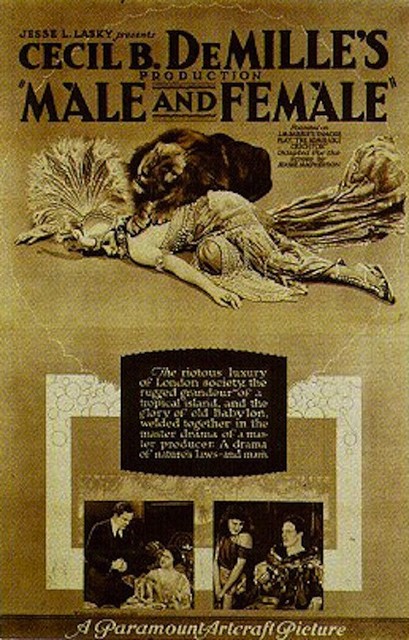

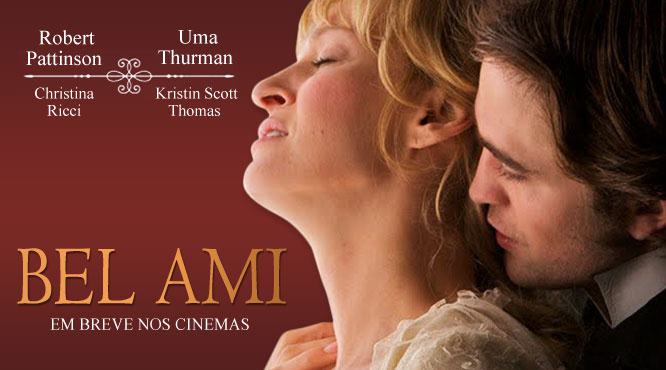


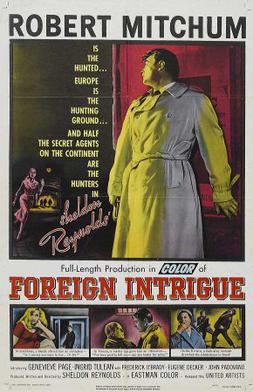
.JPG)




.JPG)

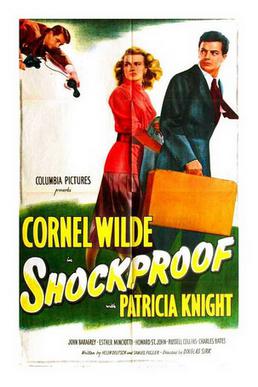


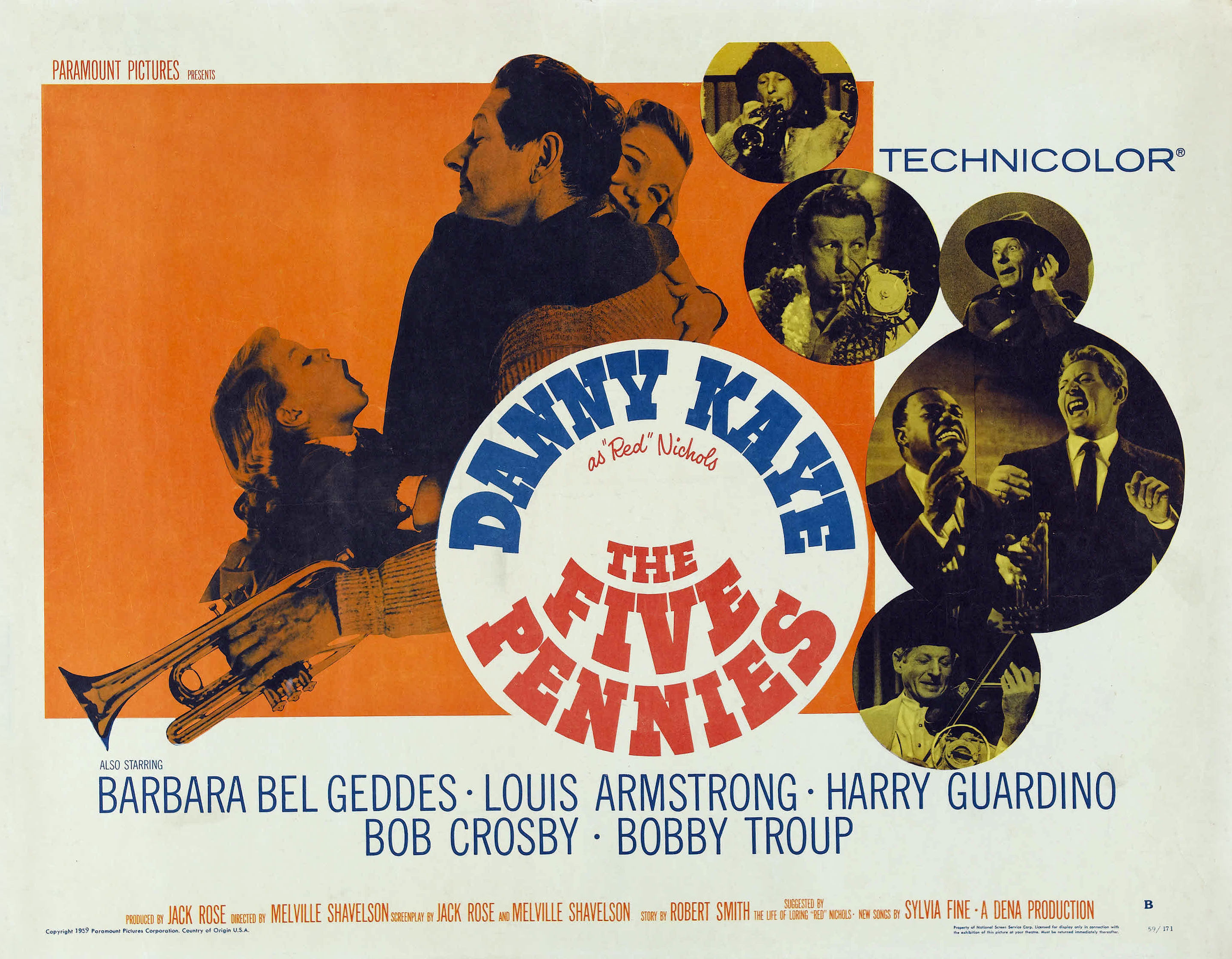
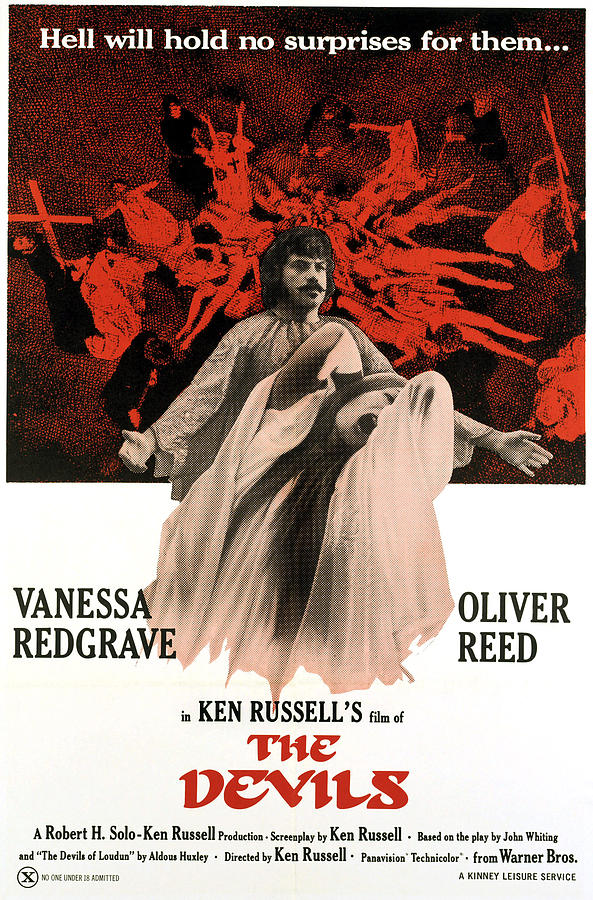

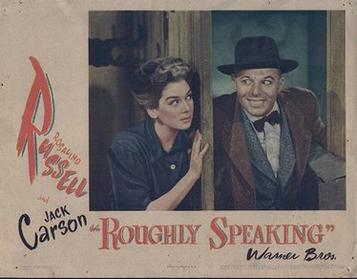

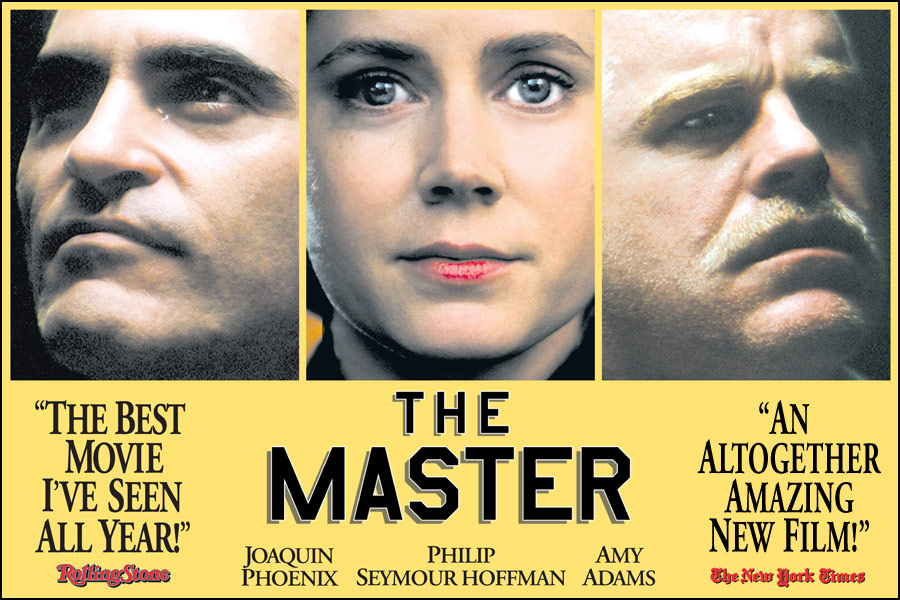


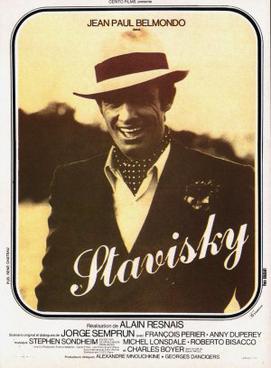

.JPG)





.JPG)








.JPG)
.JPG)

